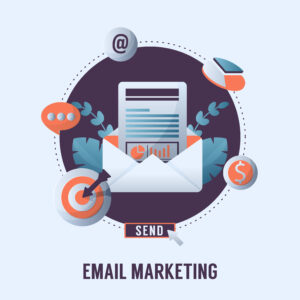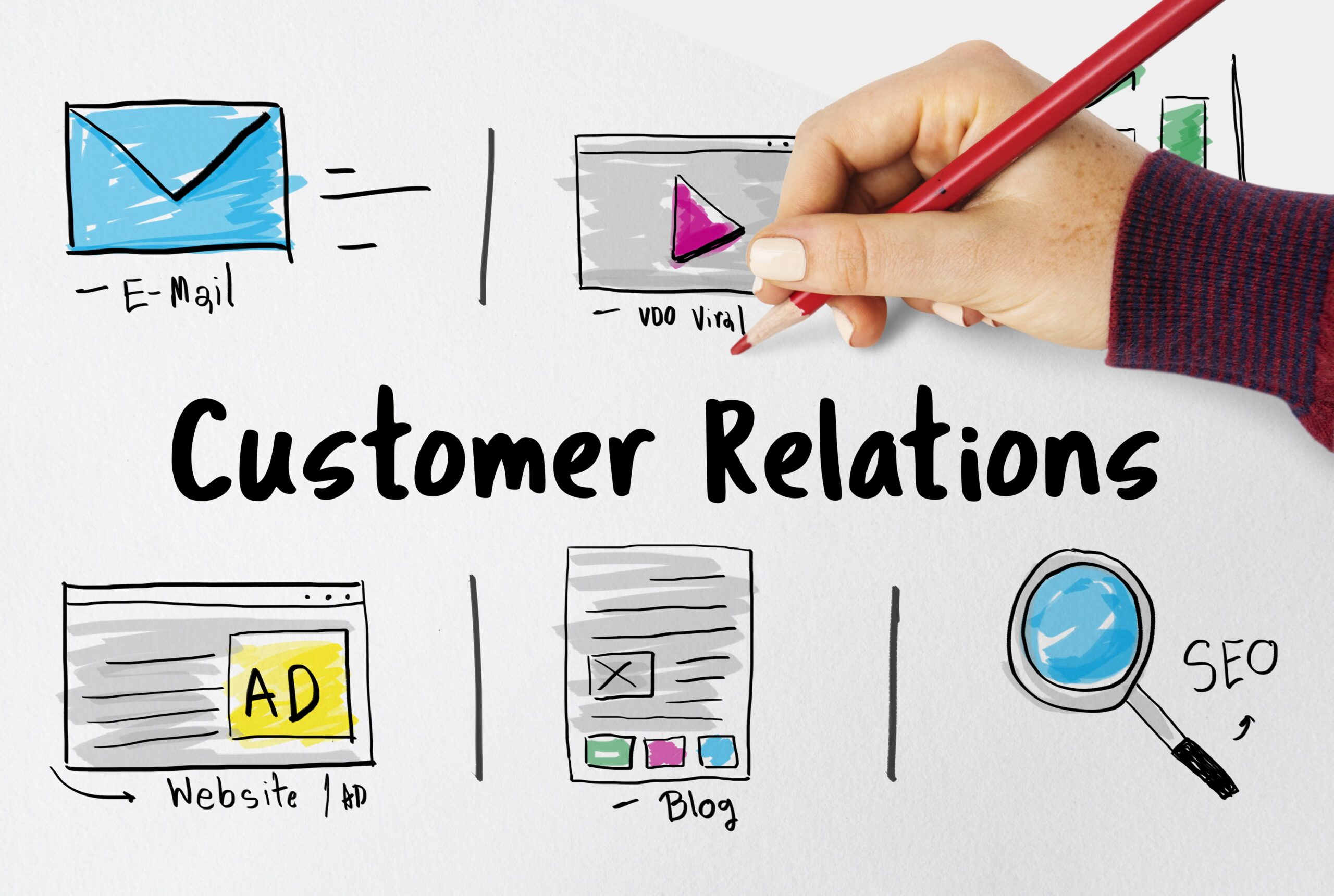Unlock the Benefits of Email Marketing Integration!
Are you searching for tactics to enhance your promotional initiatives? Email marketing integration is a great way to do just that. By integrating email into your existing strategies, you can improve customer engagement and boost sales while reducing the cost of traditional advertising methods. In this blog post, we’ll explore the benefits of email marketing integration, different types available, effective strategies for implementation as well as best practices so that you can get started with an integrated approach today.
Table of Contents:
- Benefits of Email Marketing Integration
- Types of Email Marketing Integration
- Strategies for Effective Email Marketing Integration
- Best Practices for Email Marketing Integration
- FAQs in Relation to Email Marketing Integration
- Conclusion

Benefits of Email Marketing Integration
Email marketing integration can be a powerful tool for marketers and small business owners. By uniting email into your general system, you can expand the reach of your promotions, spare resources and energy while amplifying their viability.
Increased Reach:
Email is one of the most effective ways to reach potential customers. By using a comprehensive approach, you can aim to contact distinct sections of your viewers with tailored content that is pertinent to their needs or interests. This allows you to increase engagement rates by sending content that resonates with each individual recipient. Additionally, automated emails allow you to send out personalized messages at scale without having to manually craft each message individually.
Improved Efficiency:
Integrating email into other platforms such as CRM systems or social media platforms helps streamline processes across multiple channels so that all customer data is stored in one place for easy access and analysis. Automation also reduces manual labor associated with creating campaigns from scratch every time; instead, templates are used which saves both time and money in the long run.
Integrating email marketing into your business strategy can provide you with a range of benefits, from increased reach and improved efficiency to cost savings. Comprehending the various modes of integration accessible can guarantee that your organization is exploiting email marketing’s capability to its fullest.

Types of Email Marketing Integration
By employing the correct instruments, you can optimize your email campaigns for increased outreach, proficiency, and cost-effectiveness. There are several types of email marketing integration available to choose from: automation platforms, CRM systems, and social media platforms.
Automation Platforms allow users to automate their emails based on customer data or other triggers. For example, an e-commerce store could use automation software to send out welcome emails when customers sign up for their newsletter or promotional offers when customers abandon their shopping carts. Automation platforms also make it easy to segment audiences into different groups so that messages can be tailored specifically for each group’s needs.
CRM platforms enable businesses to maintain connections with their customers over multiple communication channels, such as email, phone calls, web chats etc., and collate all interactions in one place. This makes it easier for businesses to target specific segments of their audience with personalized messages that will resonate more effectively than generic ones sent out en masse. Additionally, CRM systems provide insights into customer behavior which can help inform future campaigns and strategies.
Social media platforms provide businesses with an additional avenue to integrate email marketing into their overall strategy. By creating engaging content that encourages people to share it, businesses can expand their reach beyond what traditional methods would allow them achieve alone. Through these networks, they can communicate with potential customers or existing ones who have already opted in via other methods such as signing up on a website or subscribing via SMS/text message notifications. Taking advantage of this opportunity will help maximize the effectiveness of email campaigns and increase reach, efficiency, and cost savings.
By utilizing these three types of email marketing integration options together – automation platforms, CRM systems, and social media platforms – marketers and small business owners alike can create effective campaigns that drive results while saving time and money in the process. By utilizing the appropriate tools, email campaigns can be augmented in reach, efficiency and cost-effectiveness.
Email integration can be a potent asset for businesses, providing them with the capacity to make contact with their patrons in an expedient and successful way. Now that we understand the different types of email marketing integration available, let’s look at strategies for making it work even better.

Strategies for Effective Email Marketing Integration
Segmentation and Targeting:
Segmentation is the process of dividing your audience into smaller groups based on shared characteristics. By dividing your audience into distinct groups, you can customize communications to make them more pertinent and successful. For example, if you are selling a product that appeals to both men and women, you can segment your list by gender so that each message is tailored specifically for either male or female customers.
Personalization and Automation:
Personalizing emails with customer data such as name, location, purchase history etc., helps create a more engaging experience for recipients. Additionally, automation tools can be used to automate certain processes such as sending out welcome emails when someone signs up for your mailing list or thank-you emails after purchases have been made. Automating these tasks saves time while ensuring consistency in messaging across all channels.
Testing and Optimization:
Testing different versions of an email campaign can help identify which elements work best with specific audiences. A/B testing involves sending two versions of an email campaign – one with a variation in subject line or content – then tracking performance metrics like open rate or click-through rate to determine which version performs better overall. Once successful campaigns have been identified, they should be further optimized by refining elements such as copywriting style or design layout until the desired results are achieved consistently over time.
By understanding and leveraging the strategies for effective email marketing integration, you can ensure that your campaigns are optimized to reach the right audience with relevant content. Now let’s take a look at best practices for email marketing integration to maximize results.

Best Practices for Email Marketing Integration
Email marketing integration is an essential part of any successful digital marketing strategy. By tapping into the potency of email, firms can extend their reach and enhance their return on investment. However, in order to maximize the effectiveness of your campaigns, it’s important to understand best practices for integrating email into your overall strategy.
Establish Clear Goals and Objectives:
Before launching any campaign, you need to define what success looks like for that particular initiative. “What is the desired outcome of this campaign?” “How can its success be measured?” Posing such queries to oneself can help guarantee that realistic objectives and targets are established, ones which may be monitored and evaluated in due course. Moreover, by having distinct objectives established from the outset, it will be easier to assess which approaches are bearing fruit (or not), thus allowing for any necessary corrections.
Leverage Data To Drive Decisions:
Once you have established your goals and objectives, it’s important to leverage data when making decisions about how best to reach those targets. Collecting customer data such as demographics or purchase history allows marketers to create more targeted campaigns based on insights gleaned from this information. Utilizing analytics tools also provides valuable insight into user behavior which can then be used when creating content or optimizing campaigns for maximum engagement levels with customers/prospects alike.
Finally, once a campaign has been launched it is important to monitor performance regularly in order to track progress towards achieving set goals and objectives. Moreover, this approach can assist in recognizing potential areas that may need to be optimized. Tools such as A/B testing allow marketers to see how different versions of emails perform against each other so they know which ones resonate better with audiences before rolling out changes across all channels simultaneously; saving both time and money in the process.

FAQs in Relation to Email Marketing Integration
1. Welcome Emails:
These are the first emails a customer receives when they sign up for your service or product. They serve to introduce customers to your brand and thank them for their interest in you.
2. Promotional Emails:
These emails are used to promote special offers, discounts, new products, or services that you have available.
3. Transactional Emails:
These emails provide information about an order such as confirmation of purchase, shipping updates, and more.
4. Nurture/Relationship Building Emails:
This type of email focuses on building relationships with customers by providing helpful content related to their interests or needs such as blog posts, newsletters, tips & tricks etc
What is email integration in CRM?
Email integration in CRM is the process of connecting an email marketing platform to a customer relationship management (CRM) system. This allows businesses to automate their email campaigns, track and analyze customer interactions, and personalize messages for each individual contact. By integrating these two systems, marketers can create more effective campaigns that drive higher engagement rates and better ROI from their efforts. Small business owners can leverage the integration of these two systems to gain deeper insights into customer engagement with their emails, allowing them to make more informed decisions about future strategies and ultimately improve ROI from their efforts.
What is an email marketing API?
An email marketing API is a software application programming interface (API) that allows marketers and small business owners to access and integrate their email marketing campaigns with other applications. It enables users to create, send, manage, track, and analyze emails from within their own systems. This helps them save time by automating the process of creating personalized messages for each customer or segment of customers. Additionally, an email marketing API can be used to trigger automated workflows based on user actions or data points such as clicks or purchases. This helps marketers and small business owners increase their reach, optimize campaigns, and improve customer engagement.
How to integrate email marketing with social media?
Email marketing and social media are two powerful tools that can be used together to maximize the reach of your message. Integrating email marketing with social media allows you to use both channels to share content, build relationships, and drive conversions. DirectIQ offers the best of both worlds with the social sharing feature which allows you to share your email campaigns in your social media too. Incorporating links in emails that direct to your social media profiles provides a simple avenue for customers to remain connected with your brand, and simultaneously augments engagement on both platforms. Moreover, by disseminating emails’ content on social media, you can extend the reach of those messages and draw more focus to them. With a little creativity and strategic planning, integrating email marketing with social media is a great way to amplify your message across multiple channels.
Conclusion
Email marketing incorporation is an indispensable asset for any marketer or small business proprietor hoping to arrive at their intended interest group. By leveraging the benefits of email marketing, businesses can maximize their reach and increase customer engagement. Through effective strategies and best practices, marketers can ensure that their email campaigns are successful and profitable. With the right approach, email marketing integration can be a powerful tool for driving sales and increasing brand awareness.
Are you looking for an easy way to integrate email marketing into your business? DirectIQ offers a comprehensive solution that allows you to manage and track all of your campaigns in one place. With our intuitive tools, create automated messages, segment lists, personalize content and analyze results quickly – so you can focus on growing your customer base. Get started today with DirectIQ‘s powerful suite of features!











